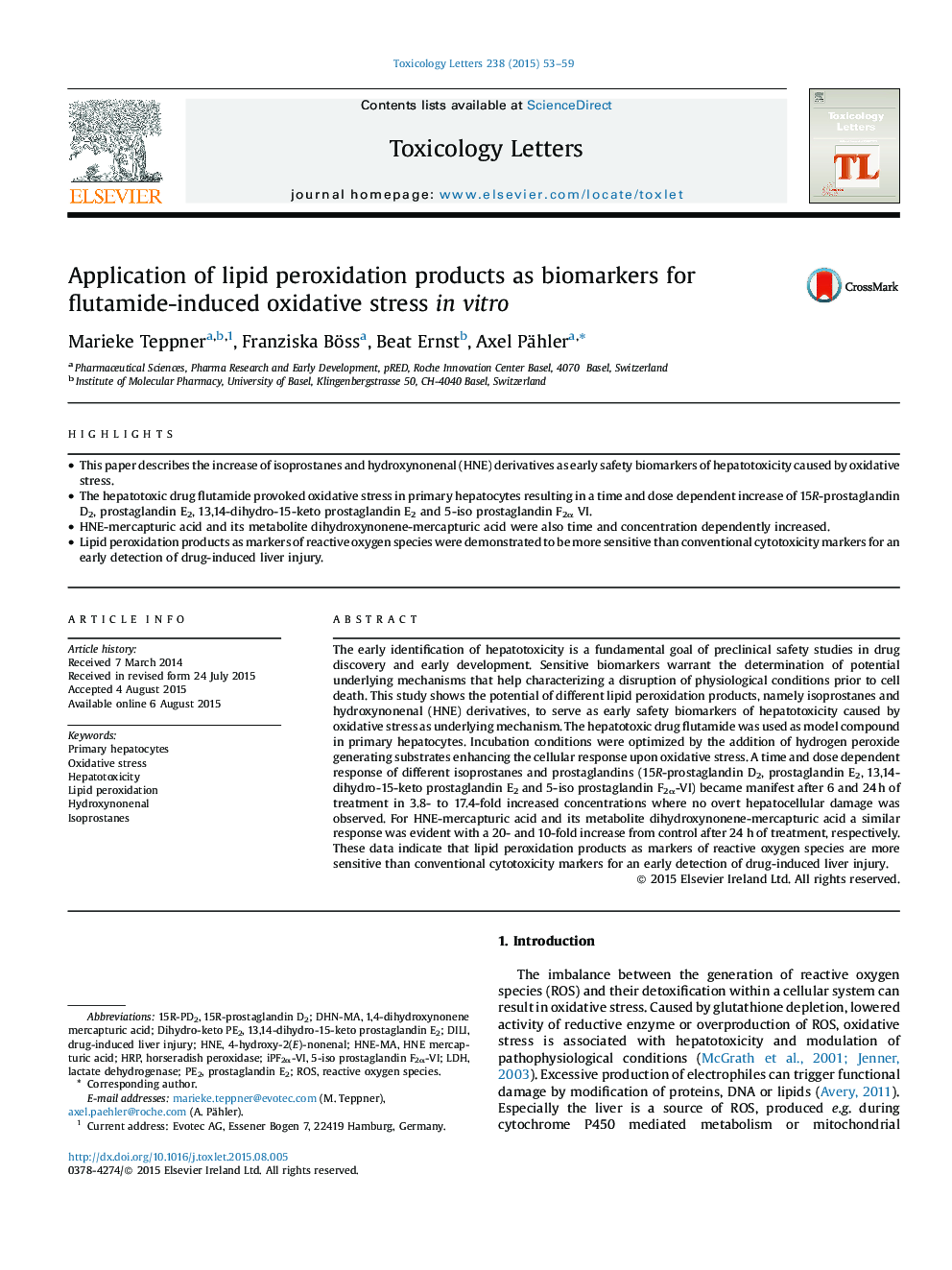| Article ID | Journal | Published Year | Pages | File Type |
|---|---|---|---|---|
| 2598578 | Toxicology Letters | 2015 | 7 Pages |
•This paper describes the increase of isoprostanes and hydroxynonenal (HNE) derivatives as early safety biomarkers of hepatotoxicity caused by oxidative stress.•The hepatotoxic drug flutamide provoked oxidative stress in primary hepatocytes resulting in a time and dose dependent increase of 15R-prostaglandin D2, prostaglandin E2, 13,14-dihydro-15-keto prostaglandin E2 and 5-iso prostaglandin F2α VI.•HNE-mercapturic acid and its metabolite dihydroxynonene-mercapturic acid were also time and concentration dependently increased.•Lipid peroxidation products as markers of reactive oxygen species were demonstrated to be more sensitive than conventional cytotoxicity markers for an early detection of drug-induced liver injury.
The early identification of hepatotoxicity is a fundamental goal of preclinical safety studies in drug discovery and early development. Sensitive biomarkers warrant the determination of potential underlying mechanisms that help characterizing a disruption of physiological conditions prior to cell death. This study shows the potential of different lipid peroxidation products, namely isoprostanes and hydroxynonenal (HNE) derivatives, to serve as early safety biomarkers of hepatotoxicity caused by oxidative stress as underlying mechanism. The hepatotoxic drug flutamide was used as model compound in primary hepatocytes. Incubation conditions were optimized by the addition of hydrogen peroxide generating substrates enhancing the cellular response upon oxidative stress. A time and dose dependent response of different isoprostanes and prostaglandins (15R-prostaglandin D2, prostaglandin E2, 13,14-dihydro-15-keto prostaglandin E2 and 5‑iso prostaglandin F2α-VI) became manifest after 6 and 24 h of treatment in 3.8- to 17.4-fold increased concentrations where no overt hepatocellular damage was observed. For HNE-mercapturic acid and its metabolite dihydroxynonene-mercapturic acid a similar response was evident with a 20- and 10-fold increase from control after 24 h of treatment, respectively. These data indicate that lipid peroxidation products as markers of reactive oxygen species are more sensitive than conventional cytotoxicity markers for an early detection of drug-induced liver injury.
